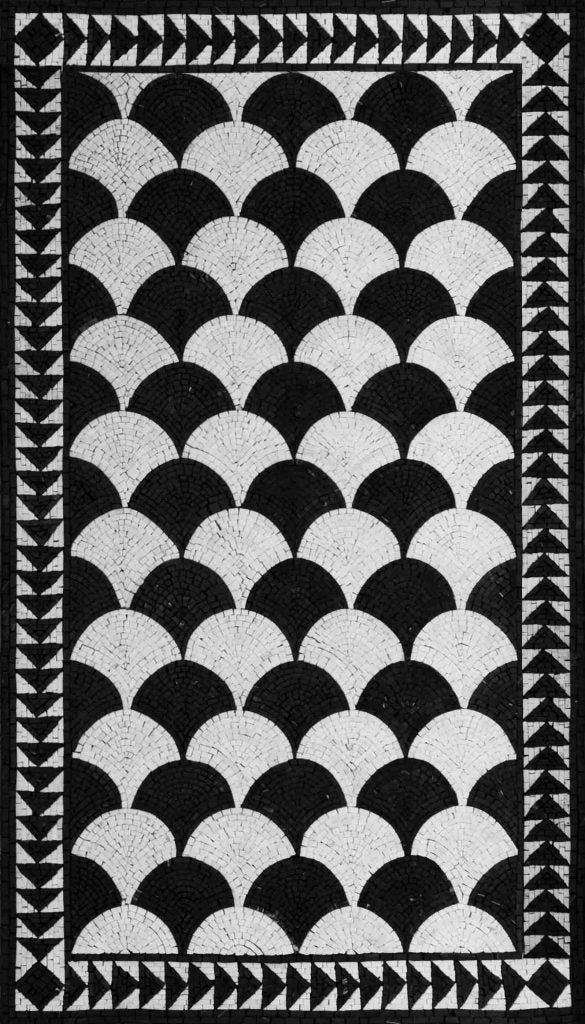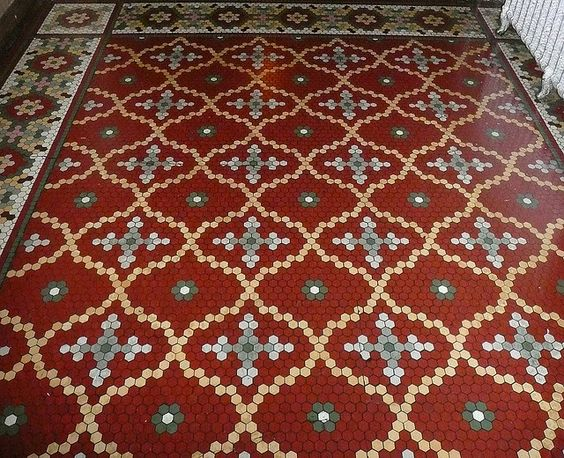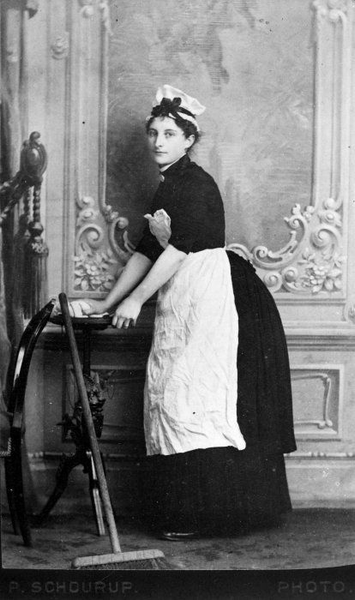Did you know that mosaic tile’s popularity has links to both Victorians and — indoor plumbing? Stay with us as we share a little of the interesting history behind our favorite subject!
The United States experienced robust population growth in the late 1800s, and with it, a need for better plumbing. Hard to imagine today, but the norm a hundred and fifty years ago was an outhouse in the courtyard – even in New York City and other large towns.

Several things had to come together to create what we think of as a modern bathroom. Better pipes (the original water pipes were made of wood), sewer systems, (the first one was installed in Brooklyn circa 1857, flushable toilets, and even hot running water didn’t arrive until the Victorian Age.
At first, homeowners felt that their new room needed to match the rest of their home, with lots of wood, carpets, and fixtures that resembled furniture.

What changed? In a word: GERMS. Throughout the late 19th century, people were acutely aware of things like smallpox, cholera, and other deadly diseases. Science was making great progress, infection was in the news, and Victorians became health nuts. There was a deep concern about hygiene, prevention of illness, and a general wariness of what their bodies touched.
So, as the impact of germ theory was reaching the public, they wanted bathroom and kitchen materials that were water-resistant and sanitary. Before antibiotics, a homeowner’s best defense against the invisible menaces was to scrub, clean, and remove any germ-harboring dirt. Glazed tile became the new surface of choice – easy to disinfect, and tidy in appearance.
Although white “subway tiles” were popular for walls, smaller mosaic tiles became the go-to style for floors. Sales literature from that time pointed out not only the sanitary qualities of this choice but also that, “Small hexagonal floor tiles permit sections to be taken up with little difficulty and replaced at small expense.”
Bathrooms became areas with an abundance of rounded corners and cove pieces at every junction that prevented spots where germs could hide. Tile manufacturers like the Cambridge Tile Manufacturing Company wrote, “No corners are left for dirt and germs to accumulate; this style of wall is fully endorsed by all physicians.”
But, as you can see, these floors were far from boring. They boasted complex geometric shapes, vibrant colors, and a welcome spot of visual interest and pattern in an ocean of shiny white surfaces.

The beauty and style of mosaic tile floors continued from that time onward, still looking much the same in the early 20th century. Borders, penny, octagon, and square tiles created endless variations.

Image source: Pinterest
As colored wall tile gained popularity, there was more mixing and matching of hues.

Get the look:

Other colors were later added to the porcelain appliances and accessories, with mosaic tile floors keeping up with trends. This 1928 Kohler showcase page discusses the lavender fixtures.

Get the look:

Meanwhile, the same obsession with shiny cleanliness extended to kitchens, which were covered floor to ceiling with the ceramic tiles that would defy dirt and bacteria.


Image source: Shorpy
Even better for those who appreciate mosaic tile art, the use of tiles made its way into public venues, such as bars, restaurants, and yes – subways!

Image source: Wikimedia Commons
The popularity of the mosaic tile look meant it was soon used throughout homes and even outside on porches and entryways. Today, looking for vintage mosaic tiles in urban areas is both fun and inspirational. These tiles have withstood the trials of time and foot traffic, still holding up beautifully.

Image source Flickr

Get the look:

Get the look:


Get the look:


Get the look:


Image source: Pinterest
Get the look:


Get the look:

As interior design styles changed, mosaic tile looks evolved. Although geometric looks stayed popular, influences such as Art Nouveau, Art Deco, and the Arts & Crafts movement brought new motifs.

Image source: Archive.org
Nevertheless, the same small tiles were used for the intricate patterning. Although the tile industry took a hit in the Great Depression, the use of durable, low-maintenance, and attractive tiles has become a staple in American homes. Today, you’ll see all kinds of applications – from bathrooms and showers to floors and counters, kitchens and backsplashes, and outdoor areas.
It just goes to show that the Victorians were on to a good thing! Today, mosaics are still the best way to add durable, low-maintenance color and style to almost any surface. We restore the roman designs with current twists and we supplant traditional art by modern art today. Find your favorite mosaic piece in our extensive catalog, and see some of our Designer Picks here!

